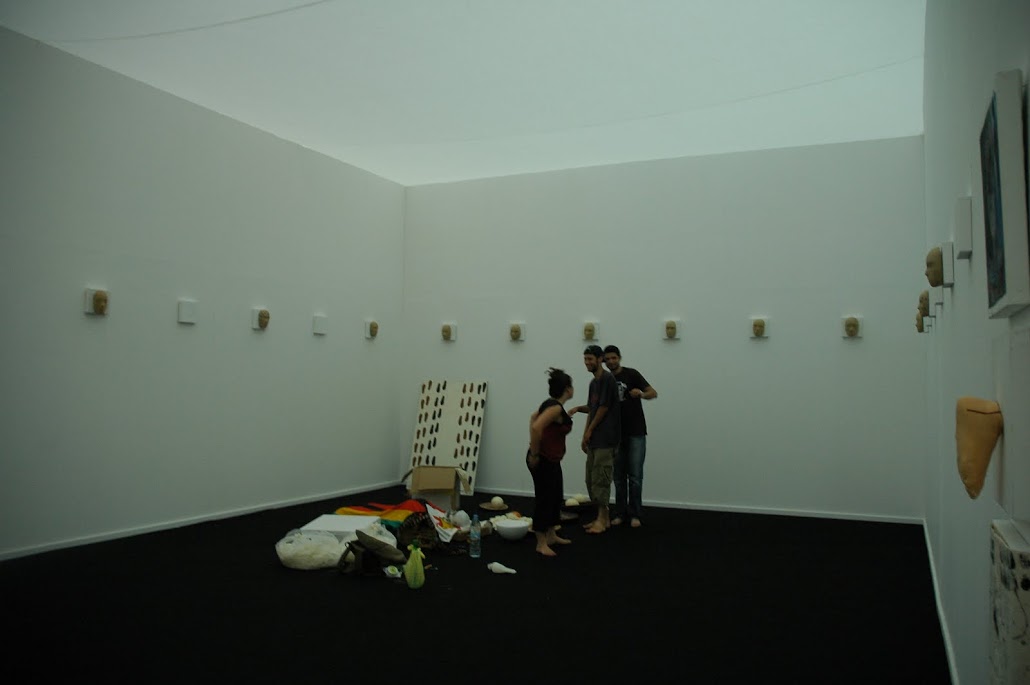“Footsteps of change” is an installation that looks at the history of Zimbabwe from 1910 the year my grandmother was born to date. Occupied by the realization that there is a lack of historical context, regarding where we come from and what makes us who we are, I decided to go back in time to the stories my grandmother passed on to me.
This installation therefore begins with the memory of my grandmother, Ms. Sifikalomuthi Betsy Nkomo who passed away in 2007.
Footsteps of Change is a project with a series of works that consists of 60 pieces developing in different stages. The installation is a result of the research I am doing on my identity, history and cultural heritage. It began with my name; “Sithabile Mlotshwa Mgidi Makhawulane Ngwalazindeni Mazibuko Ngwalongwalo Phakathi”.
Remembering the stories my grandmother used to tell me, I began to question the history of names, the stories hidden in them and the impact changing ones name had on their history. Coming from an Oral culture which passed on its history through names, my search led me to a realization that a big part of my culture, of where I come from, who I am and the changes that have got me to this point are hidden and getting forgotten. I therefore began this journey in search of the history hidden in names, names that were changed and or not changed from 1910 to date. This piece therefore is a reflection of my identity as a Zimbabwean and questions who I am, what Zimbabwe is as a country, where we come from and where we are going.
In this work I try to reflect our past so that as we go forward we do not forget where we come from. Through this, I try to question how we can learn from our past, so that we do not repeat the same mistakes.
Besides our history we are at a process of change, in this change, I have chosen to reflect on the future and how our past and the decisions made in the present can affect in a positive or negative way our future. The 6 eggs and the pregnant woman lying on the ground reflect the birth of hope and a future filled with promise but at the same time highlights how fragile the situation is. The heads watching over the body and the eggs symbolise the time that has passed, the history and the struggles. While they watch from a distance they are still present but in memory to remind those taking the footsteps of change they need not to forget but to instead take great care in making these steps.
The piece with his Excellency and her Majesty is divided into two parts; her Majesty’s footsteps of change which are in colour are before 1920 - 1950 and from 1950 to 1975. They are then continued to the future where they become invisible. The Footsteps of change from his Excellency are also in colour from 1980-1995 and from 1995 to 2005. They too continue to the future and become invisible. The invisible footsteps neither belong to her Majesty nor to his Excellency’s footsteps of change, they are the footsteps from now to the future and are therefore not visible because these are footsteps that still need to be made.
The mixed media painting showing a wounded white man’s hand and a black man’s foot is a reflection of the pain both sides feel. This piece is meant to reflect that what makes Zimbabwe is not black or white but that all Zimbabweans are equally responsible for making / breaking what Zimbabwe is or can be. The wounded hand is not bleeding neither is the foot. They however are both wounded and their wounds are not healing but connected in pain and in that pain connected to their country.
This is why there is an inscription “Simunye kozekubenini”? Which in Ndebele means “we are one for how long will this go on”? This is among other inscriptions that say Inxeba lendoda kalihlekwa. This mixed media painting is the starting part of the installation and is meant to remind the viewers of the need not to forget how hard and painful the footsteps of the past have been and how hopeful but fragile the situation in present Zimbabwe is.
I used the gloves around the face to emphasise the need to take great care in making these steps so that the ones about to be born can have a secure future. The artwork reflects frailty because the situation at the moment is fragile. This piece however is about hope and how fragile but promising the future is. The gloves symbolise fragility and a need to take cautious steps in preserving now for the future generations.
S. Mlotshwa
